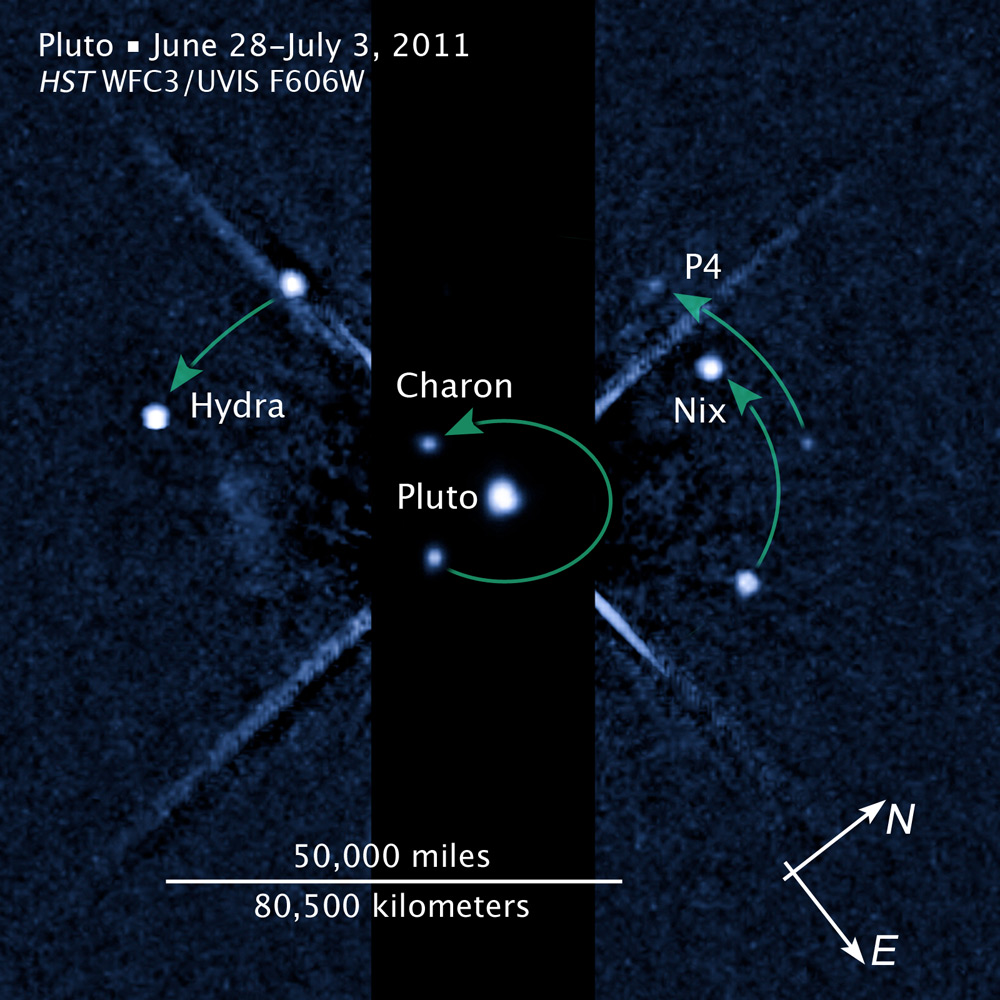What Should Pluto's New Moon Be Named?

Planetary scientists have spotted a fifth moon orbiting the dwarf planet Pluto. The petite satellite — it measures just 6 to 15 miles across — showed up in new photos of the Pluto system taken by NASA's Hubble Space Telescope.
This newest member of the solar community currently goes by the unprepossessing label "S/2012 (134340) 1." Clearly, it's in desperate need of a name. What will astronomers christen it?
It can't be named just anything under the sun. As usual with newly discovered astronomical objects, S/2012 (134340) 1's name will be subject to a tough selection process overseen by an organization called the International Astronomical Union. IAU guidelines specify that "objects crossing or approaching the orbit of Neptune … notably [Pluto and its moons], are given mythological names associated with the underworld."
Pluto was the god of the underworld in Roman mythology. Charon, the largest of Pluto's moons, is named after the mythical ferryman who carried the souls of the newly deceased across the River Styx, which separated the world of the living from that of the dead. Nix, Pluto's second-closest moon, was the Greek goddess of darkness and night, and Charon's mother. Hydra, the third closest to Pluto, was a many-headed serpent that guarded a back entrance to the underworld located deep below the surface of a lake. [Why Doesn't Earth's Moon Have a Name?]
The dwarf planet's fifth moon needs a name along these hellish lines, and so does its unnamed fourth moon, which was provisionally designated P4 at the time of its discovery last July. The IAU nomenclature committee will try to honor the wishes of the two moons' discovery team, which includes Alan Stern, a planetary scientist at the Southwest Research Institute in Boulder, Colo.
So, what's his choice? "There are dozens of ideas but nothing is close to settled," Stern told Life's Little Mysteries. He said he prefers to defer the decision until his team finishes mining the Hubble data in search of additional moons orbiting Pluto.
"When we discovered P4, I was on the side of advocating waiting to see if we discovered more moons and then naming them as a group, like we did with Nix and Hydra," Stern said.
Get the world’s most fascinating discoveries delivered straight to your inbox.
If no more moons are spotted, then the two new foundlings will likely be named for an "underworldly" mythological duo. Know any?
Follow Natalie Wolchover on Twitter @nattyover. Follow Life's Little Mysteries on Twitter @llmysteries, then join us on Facebook.
Natalie Wolchover was a staff writer for Live Science from 2010 to 2012 and is currently a senior physics writer and editor for Quanta Magazine. She holds a bachelor's degree in physics from Tufts University and has studied physics at the University of California, Berkeley. Along with the staff of Quanta, Wolchover won the 2022 Pulitzer Prize for explanatory writing for her work on the building of the James Webb Space Telescope. Her work has also appeared in the The Best American Science and Nature Writing and The Best Writing on Mathematics, Nature, The New Yorker and Popular Science. She was the 2016 winner of the Evert Clark/Seth Payne Award, an annual prize for young science journalists, as well as the winner of the 2017 Science Communication Award for the American Institute of Physics.



